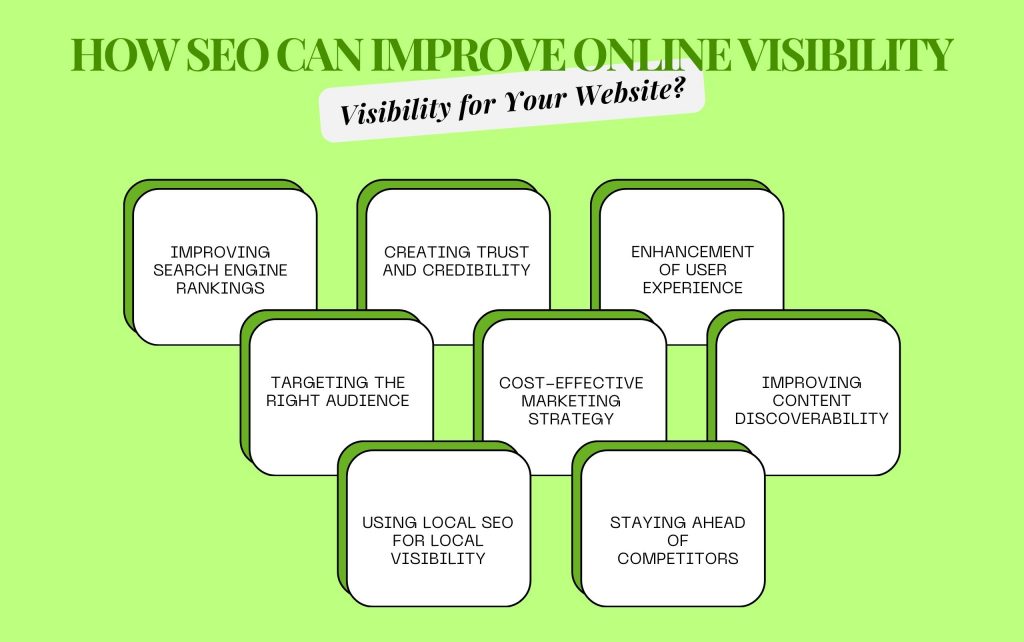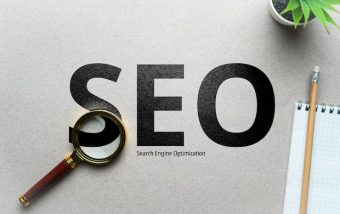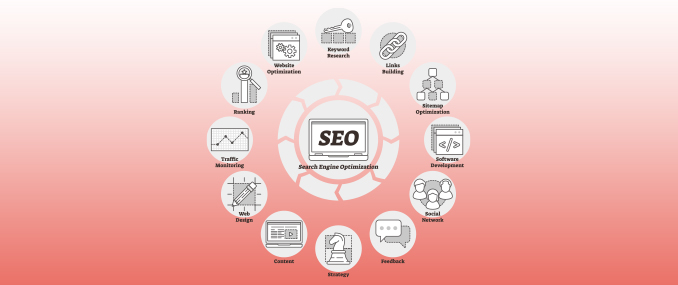How To Know If Someone Blocked You On iMessage? 5 Secret Hacks!
Apr 16, 2025

Apr 16, 2025

Apr 16, 2025

Apr 15, 2025

Apr 11, 2025

Apr 11, 2025

Apr 11, 2025

Apr 08, 2025

Mar 29, 2025
Sorry, but nothing matched your search "". Please try again with some different keywords.


Are you struggling to make your mark in the vast digital landscape? In today’s hyper-connected world, online visibility is the linchpin of successful digital marketing.
However, amidst millions of websites competing for attention, how can you guarantee that your site stands out? The solution lies within the realm of SEO, the blend of art and science that enhances your site’s visibility in search engine results.
Strong SEO practices are not just an addition but a necessity, serving as the cornerstone of website optimization. Let’s dive in.
SEO is about visibility and relevance. To demystify SEO, consider these key elements:
Beyond mere keywords, high-quality, authoritative content fosters trust and engagement. It propels your site to the top of the search results.
Backlinks from reputable sites act as endorsements, bolstering your website’s credibility in the eyes of search engines. A seamless user experience, characterized by fast load times and intuitive navigation, keeps visitors returning.

Keyword research is the bedrock of SEO. It’s about understanding the terms and phrases that potential customers use. By identifying these keywords, you can tailor your content to match.
Begin with tools designed for keyword discovery. They reveal search volumes, trends, and competition levels. Focus on long-tail keywords.
These specifics target terms that are less competitive but highly relevant. Incorporate these keywords naturally into your content.
Keywords should align with your audience’s intent. This relevance boosts your site’s chances of appearing in relevant searches. Thus, solid keyword research supports a strategy that connects with the right audience at the right time.
On-page optimization is crucial for SEO success. It involves:
Meta tags are HTML elements that summarize page content. Craft meta-descriptions with care. They impact click-through rates from search results.
Headlines play a crucial role; use them to grab the reader’s attention effectively. Make sure your headlines incorporate relevant keywords for maximum impact.
Images enhance understanding. Optimize them for speed and context. Tag images with accurate descriptions.
It helps in search indexing. On-page content must be:
Content should serve the reader’s intent and provide fresh perspectives. Ensure readability with short paragraphs. Break text with subheadings.
Keep in mind that optimization is a continuous process. Regularly enhance and update content to ensure your website remains competitive and relevant in the changing search environment.

Off-page optimization is the strategic pillar of SEO that extends beyond your website. It boosts online reputation and increases domain authority:
Acquiring backlinks from esteemed websites can influence your site’s standing. Focus on natural links from industry authorities.
On social media, active participation and consistent interaction with your audience can amplify your content’s reach. Collaborate with influencers who resonate with your brand. Such partnerships can lend valuable credibility and visibility.
These off-page strategies strengthen your digital footprint. These contribute to a robust and trustworthy online presence. Remember, a reputable online reputation is vital for long-term SEO triumph.
Technical SEO is the behind-the-scenes force critical to a seamless site experience. It’s the foundation that supports your content, making it discoverable and functional. Key areas include:
Focusing on these technical aspects ensures a smooth visitor experience. These enhance user satisfaction and your SEO efforts.

Content marketing is the powerhouse of SEO success. It involves creating valuable, relevant content aimed at attracting and retaining a defined audience.
Good content speaks to the needs and interests of users. It’s not enough to simply produce content. It must be authoritative and informative, providing real answers to real questions.
By producing high-quality content, you position your brand as a thought leader in your niche. This approach can boost your SEO rankings.
High-quality content gets shared and earns backlinks. These are strong signals to search engines. They indicate that your site is a reliable resource.
Regularly updating your content keeps it fresh. It keeps users and search engines coming back for more. To boost a website, consider home services SEO.
This specialized approach can further enhance your online visibility. It also attracts a targeted audience interested in your services. By optimizing your content for Home Services SEO, you can increase your website traffic and drive conversions effectively.
To gauge SEO effectiveness, analytics, and performance indicators are key. They shed light on:
Take traffic growth into account, assessing both new and returning users. Examine patterns and surges in traffic. Following that, focus on conversion rates to understand user actions such as purchases or sign-ups.
Higher rates indicate improved content alignment with user intent. Evaluate keyword rankings to gauge visibility in search results.
Use tools like Google Analytics. They track progress and highlight areas that need improvement. A regular review of these indicators is crucial.
It lets you refine strategies and enhance SEO performance. Remember, measuring success is a continuous, dynamic process. It demands attention and adjustment.
The landscape of SEO is evolving, influenced by technological advances, user behavior shifts, and search engine updates. Here are some critical trends and predictions to watch:
Voice search optimization will be indispensable as more people rely on digital assistants. Artificial intelligence, particularly machine learning, will fine-tune content personalization, affecting search result relevance.
Visual search is set to transform SEO; as technology improves, image recognition becomes a key search component. UX will remain essential; seamless, user-focused designs will influence SERP standings. Staying ahead of these trends can secure a competitive SEO advantage.
SEO is the heartbeat of online visibility and success. It is vital, with ever-evolving elements like keywords, high-quality content, and technical prowess. Effective SEO strategies lead to higher rankings, increased traffic, and better conversion rates.
Staying informed and adaptable to changes lays the groundwork for dominance in the digital realm. Embrace SEO’s power, and you can transcend the clutter, securing an unshakeable online presence.
Remember, in the digital world, SEO is not just a tool. It is the key to unlocking potential.
Did you find this article helpful? If so, check out the rest of our site for more informative content.

To gain online visibility, businesses and others desire today want online fame is crucial for the businesspersons, bloggers, and their interested person aiming towards audience attraction.
Search engine optimization is at the epicenter of online visibility enhancing organic traffic and elevates the search engine rankings as well.
With effective SEO power, you can position your website at the front of search engine results. You will then have a potential customer or reader who easily finds your content. Let’s explore how SEO can unlock greater online visibility for your website or brand.
The main function of SEO is to improve your website’s rankings on search engine results pages (SERPs).
You end up enhancing more people being active visitors to your site from those who are actively conducting these targeted queries: more visibility. Keyword optimizations, high-quality content writing, and technical SEO modifications-including site speed as well as mobile-friendliness-all ensure that your page rises in search results, an instant point of differentiation for you as it gets ahead of the others.
Higher Click-Through Rate: Sites that rank on the first page of search results are likely to click more than those that come below the page. There is a higher chance of attracting traffic due to increased visibility.
More Organic Traffic: When your site ranks higher in search results for specific keywords, there will be more organic traffic with no pay-per-click spending on advertisements.
Most website visitors see a high-ranking site as more trustworthy and reliable than the low ranking counterpart.
Google and other search engines have very rigid algorithms that consider content quality, authority, and experience on use.
Sites that fulfill such criteria are more likely to rank higher, thus making a message of reliability to the visitors coming in. Over time, strong SEO practices build your brand’s authority, helping you establish trust with both search engines and your audience.
Brand Authority: As your website becomes recognized as a leader in your industry, it builds trust with both users and search engines, fostering brand loyalty.
Improved Reputation: Being listed on the first page of search results for relevant terms boosts your reputation as a credible and authoritative source in your field.
Optimization of UX for a website is a very important aspect of SEO. The search engine algorithms prioritize the websites that offer a smooth and user-friendly experience, especially when it comes to speedy loading times, mobile-friendliness, and intuitive navigation.
When these technical factors on your site are improved, then users are more likely to spend their time on your site with positive experiences, thus more engagement, fewer bounces, and higher conversion rates.
Faster Website Performance: The optimization of site speed benefits both user experience and SEO performance, as search engines prefer sites that are fast to load.
Mobile Optimization: As mobile traffic is rising, search engines have adopted mobile-first indexing. A responsive site boosts both user experience and search rankings.
SEO lets you target the right audience through focus on relevant keywords and searches. Keyword research can be done to know which terms your target audience will be searching for and thereby create content that would fit their needs.
This attracts more people who are likely interested in your product, service, or content, increasing the chances of conversion.
Search Intent Alignment: Through content optimization based on search intent – that is, what a user is looking for when he searches – you ensure your website meets the specific needs of your audience.
Local SEO: For businesses that have physical locations, this type of optimization for local terms will attract nearby customers, who are more likely to convert.
One of the most important advantages of SEO is that it is cheaper than other forms of advertising, including paid search ads or print media.
Although SEO will incur an initial investment in terms of time and resources, long-term benefits such as sustained organic traffic often outweigh the cost of ongoing paid campaigns.
It also offers better ROI since organic traffic comes without continuous advertising expenses.
Long-term Results: Once your website ranks high for targeted keywords, then it can continue to attract traffic without a sustained investment in paid ads.
Better ROI: It offers long-term sustainable visibility with lower long-term costs, compared to paid advertising.
Improve Content discoverability SEO optimizes a blog, articles, as well as e-commerce product pages, making your content much more accessible by search engines and users in general.
Meta tags headers can be optimized; URLs for your posts must be suitable too, besides your content always to reflect the highest quality and matches that of users’ intent too.
Increased Visibility: Ranking well for relevant search terms makes your content more visible to a larger audience, which means more traffic to your site.
Higher Engagement: Optimized content resonates more with users, leading to higher engagement through shares, comments, and backlinks.
Local SEO is important to those businesses serving specific geographic areas. This means that by optimizing your website for local search, you are guaranteed that your business will be listed in the search results in location-based searches.
It starts with the setup of a Google My Business profile, optimization for local keywords, and citation building. This makes local SEO help reach potential customers living nearby who might actively be searching for the product or services you offer.
Higher Local Rankings: Local optimization correctly can put your business on the local search results, such as the Google Maps pack.
Targeted Local Audience: Attracting locals is likely to increase conversion, as they are more willing to act or make purchases.
This way, effective SEO strategies give you a competitive advantage because it will make you ahead of your competitors in business or any website in the niche.
By constantly optimizing your content, improving your site’s technical SEO, and tracking performance, you can adapt to the changes in search algorithms and industry trends. SEO keeps you relevant and competitive in this ever-changing digital landscape.
Competitive Advantage: Regular SEO efforts ensure that your website remains visible in an increasingly crowded online space.
Adaptability: By monitoring SEO performance and making adjustments as needed, you ensure that your site stays optimized for current search engine algorithms.
SEO is a powerful tool that can significantly improve your online visibility and bring long-term success to your website or business.
With this, it increases your search engine rankings, builds trust, optimizes the user experience, targets the right audience, and provides cost-effective marketing, thus helping you unleash the potential of the digital space.
With a consistent effort and a well-executed SEO strategy, you will be sure to ensure that your website attracts not only more visitors but converts them into loyal customers, ensuring sustainable growth and success.
Read Also:
Mashum Mollah is the feature writer of SEM and an SEO Analyst at iDream Agency. Over the last 3 years, He has successfully developed and implemented online marketing, SEO, and conversion campaigns for 50+ businesses of all sizes. He is the co-founder of SMM.
View all Posts
How To Know If Someone Blocked You On iMessag...
Apr 16, 2025
7 Website Design Mistakes That Are Hurting Yo...
Apr 16, 2025
Programmable Dynamic SEO for Location-Based P...
Apr 15, 2025
Google Boba Game: How To Play This Fun Game B...
Apr 11, 2025
Which Is The Best Video Search Engine Of 2025...
Apr 11, 2025

